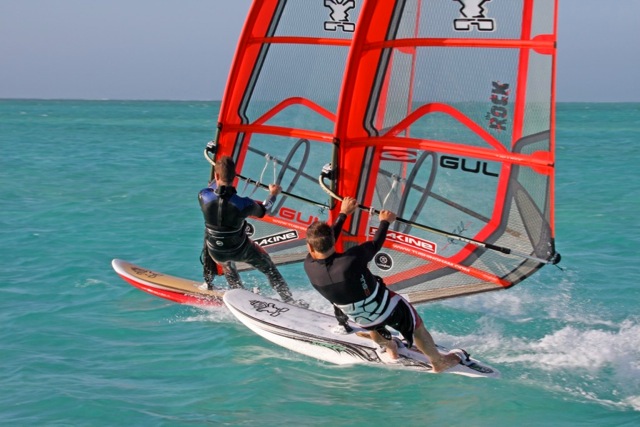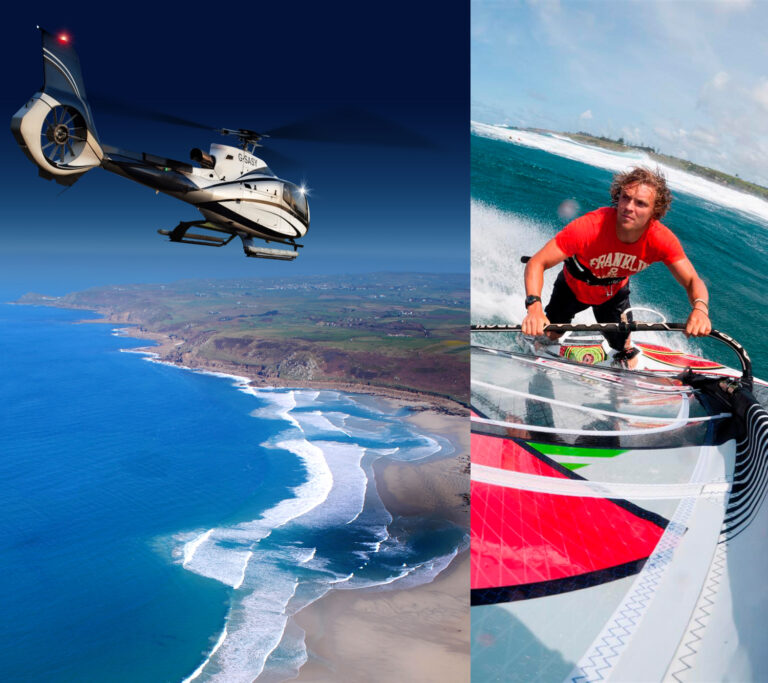Simon Bornhoft joins Boards for the next instalment of Boards Basics, all about increasing speeds whilst maintaining control.
GOING FASTER
Once you’re comfortable in the harness and straps, you’ll be able to use larger sails and reach planing speeds. On modern equipment, it doesn’t take long to progress enough to experience the thrill of skimming over the water at about 20 Knots. It’s a sensation you’ll never forget and want to repeat as often as possible. Initially, sailing in stronger winds can be physical and you’ll have an increased number of dismounts, but that’s half the fun of learning! If you work on your stance you’ll become more assured with your actions and soon be sitting back and enjoying the ride.

To establish a good base stance, think of the number 7 it will help apply some key windsurfing principles.
Vision: Look where you want to go.
Trim: Keep the board flat with equal weight on the feet, extending the front leg and slightly bending back leg.
Opposition: Extend the front arm to keep a distance from the rig and create that counter balance.
Power: With the arms shoulder width apart, sheet the boom in and down by dropping the rear shoulder and hip to windward.
OVERALL THOUGHT: Use the body weight to resist the power in the sail, not the arms.
PLANING STEERING
When you’re in the harness and straps at higher speeds, it’s possible to change direction using the slightest leg, toe and heel pressure.
DOWNWIND STEERING
To turn downwind, push through the front leg and toes of the front foot whilst flexing the rear leg.
If you also lean the rig forward (body stays back) it will accentuate the downwind turning action.
UPWIND STEERING
To turn upwind push through the rear leg and slightly flex the front leg.
If you also lean the rig back, it will accentuate the upwind turning action.

BLASTING CONTROL
How you move, position and angle your body, has a massive effect on being able to adapt to different water states, wind conditions, board speeds and the varying power in the rig. So get ready to be dynamic and accentuate some key points. Using the 7 shape as the basis of your stance, you alter the alignment between head, hips and heels to control and cope with different conditions.

In lighter winds, both in and out of the harness and straps, you’ll want to straighten the ‘7’ stance. This is done by lifting and locking the hips and tightening the torso to encourage the rigs power to transfer through the body to the board. Really extending and pushing through the front leg, also helps to lock the board flat and drive it forward.
“A Lift & Lock Straight 7 Stance”
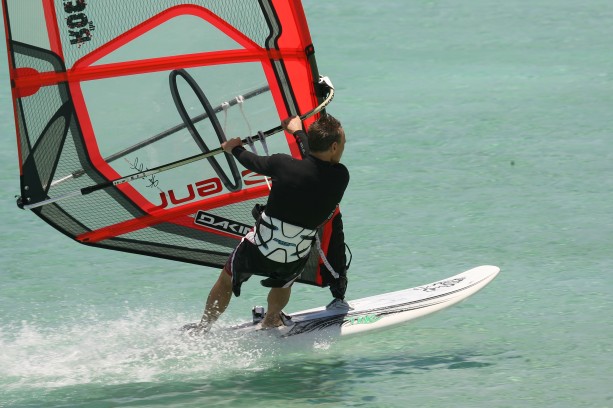
To keep planing through lulls or when heading upwind, lean the upper body forward and rake the sail back towards the tail to counter balance. In extreme situations this can mean bending the front leg slightly to allow the upper body to accentuate the forward lean.

STRONGER WINDS
At the other end of the wind scale when you want to control excess speed you need to alter your stance and the forces that transfer from the rig to the board. Essentially you need to commit more weight down into the harness and lock the board flat to the water.
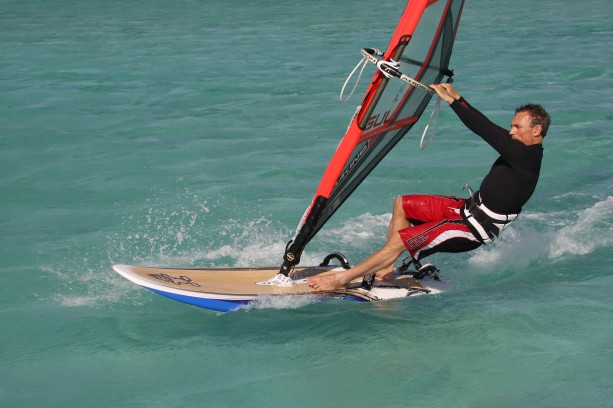
Strong winds, need real commitment and the rewards are amazing. So whenever windsurfers need more control they use what is often referred to as a Super 7 ‘drop and dig’ stance. This action is used whenever there is a very strong pull from the rig, be that getting going, harnessing, finding footstraps or controlling a speeding board over chop. The principle movement is to ‘drop’ the hips and ‘dig’ the heels (curling the toes up when in the footstraps). This dropping down and back in the harness increases your resistance over the rig and creates a down force onto the mast base that helps lock the board flat. The curling of the toes and the crucial flexing of the back leg absorbs chop and reduces bounce. When it’s windy, you’ll see people locked down and really blasting flat out. No words can describe the sensation this gives you.
“At speed the board responds to your every move as you’re scudding over the surface of the water, powered by the wind and controlled through your body. It’s a feeling you’ll never forget!”
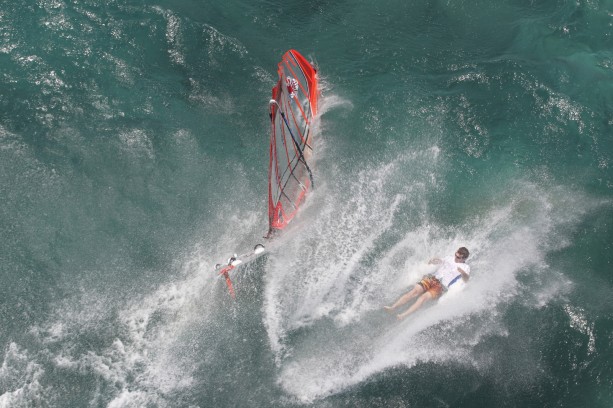
Looking at the kit, breaking at the waist, bending the arms too much or moving in the same direction of the rig, are all common beginner, intermediate and advanced problems, both in or out of the harness. Working on developing your 7 shaped stance range early on will pay huge dividends as you progress through the sport. Especially when new to planing speeds, there’s a tendancy to be catapulted forward by the rig. To combat this, take a more upwind sailing line and accentuate your ‘drop & dig’ stance.
There will be more from Simon Bornhoft Windwise www.windwise.net in the next edition of Boards Basics soon! For now check out the previous pieces in the series and catch up on any techniques you have missed here.
Images by Karen Bornhoft Windwise

